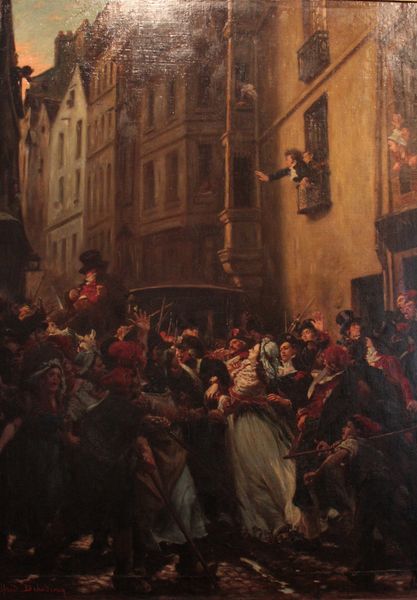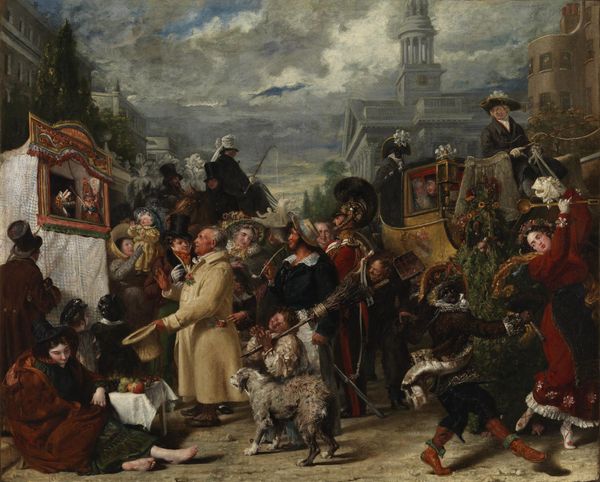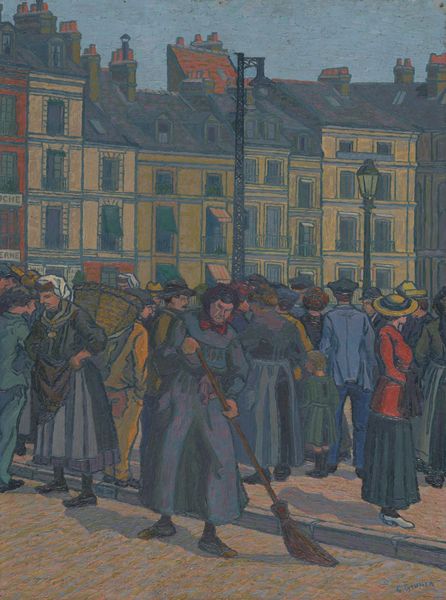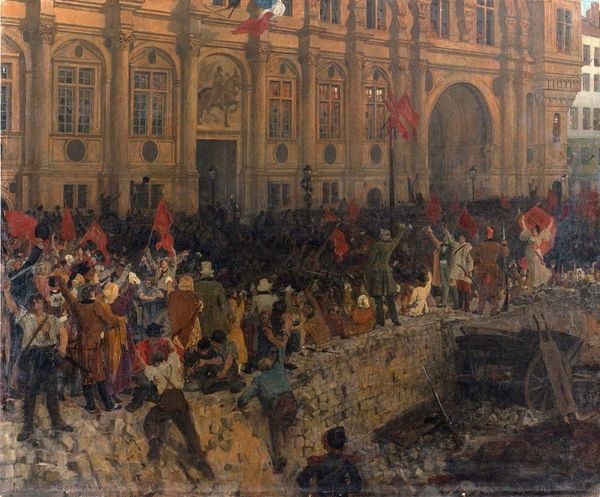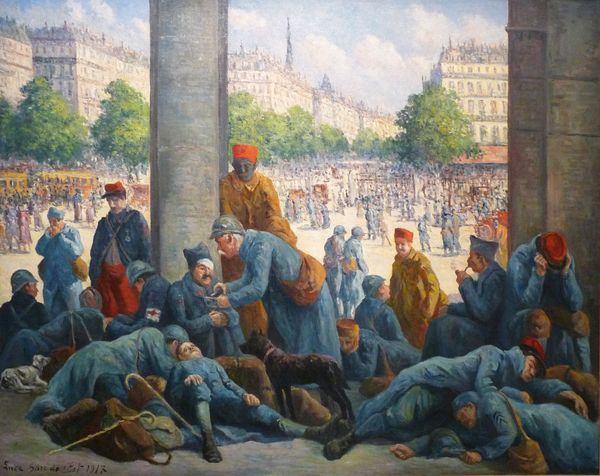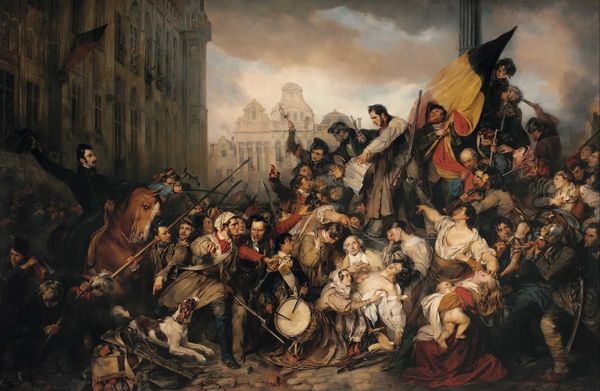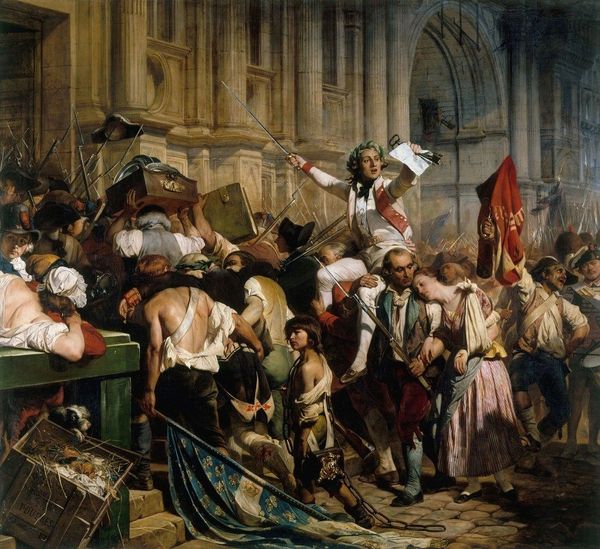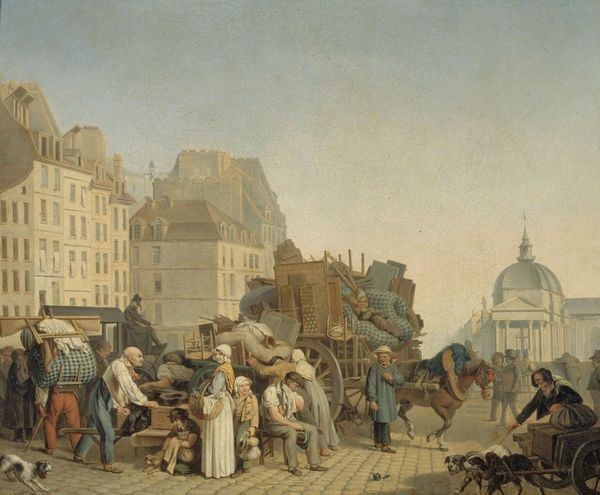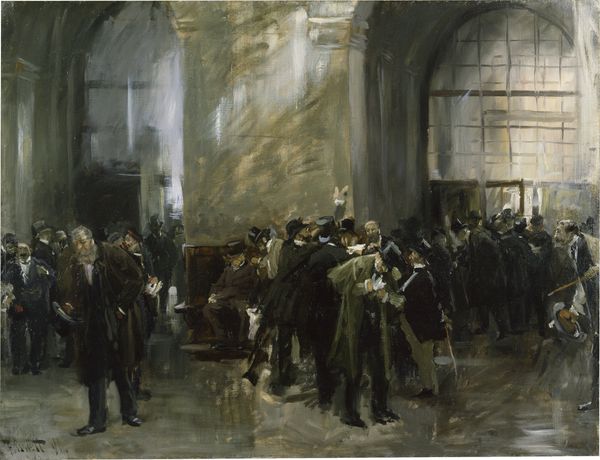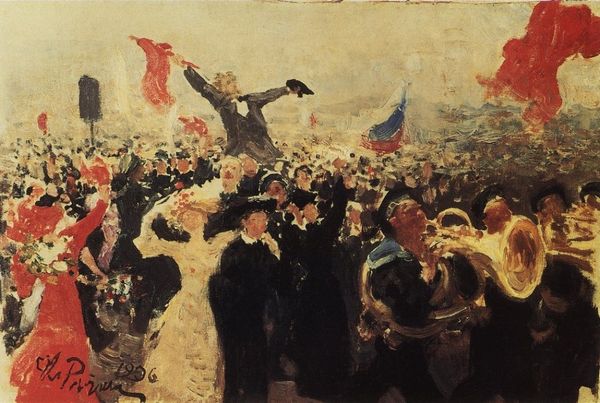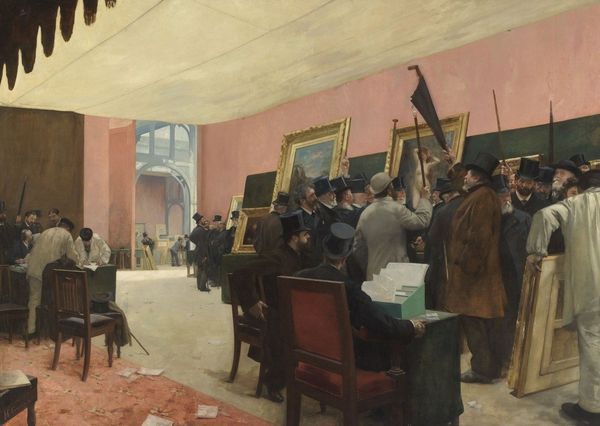
The departure of the soldiers, in July 1870 1879
0:00
0:00
alfreddehodencq
Carnavalet Museum, Paris, France
Dimensions: 90 x 130 cm
Copyright: Public domain
Curator: Standing before us is Alfred Dehodencq’s oil painting, "The departure of the soldiers, in July 1870," created in 1879 and currently residing in the Carnavalet Museum, Paris. Editor: What a chaotic scene. My first impression is a sort of somber tension emanating from the material handling. It feels weighty, thick. I can almost feel the texture of the fabric and the damp Parisian air just looking at the paint application. Curator: Indeed, the impasto is quite expressive, and I find that Dehodencq captures the emotional complexity of the moment with significant artistic competence. Note the chromatic restraint; the palette serves to amplify the emotional turmoil depicted. The repetition of vertical lines also conveys a palpable feeling of impending movement and mass action. Editor: For me, the material reality of 19th century conscription policies and the industrial war machine are present within those dark colors. How were those uniforms fabricated, what were the working conditions like? Also the faces of those left behind communicate anxiety of that particular time. It prompts consideration for labor involved to produce elements like textiles to be fed into war. Curator: From a purely structural perspective, the composition effectively leads the eye from the lamenting figures on the left to the soldiers marching right, with a receding cityscape subtly amplifying the painting's depth. Editor: Yes, but in doing so, he obscures a bit of the individual sacrifice by incorporating such a broad cityscape. I wonder if this painting might gain by investigating the role the factories or workshops played at that time that clothed and equipped these soldiers who were thrust into battles. What was the nature of these businesses and labor practices supporting the war machine at the time of the Franco-Prussian conflict? Curator: I agree there is certainly a dialogue to be had regarding industrial impact during conflict. Nevertheless, one cannot deny that Dehodencq skillfully encapsulates the feeling of the historical episode that resonates through this period of European conflict by examining purely compositional elements, particularly spatial relationships and figurative groupings. Editor: It really pulls me in. Dehodencq challenges what ‘history’ means through the material presence of this painting—more than any glorification, for me, the work presents a visceral reminder of labor and resources extracted to pursue wars. Curator: A provocative analysis, I'd say. Considering that it manages to invite a re-examination of semiotic language of romanticized battle in art production during the end of the 19th century.
Comments
No comments
Be the first to comment and join the conversation on the ultimate creative platform.
